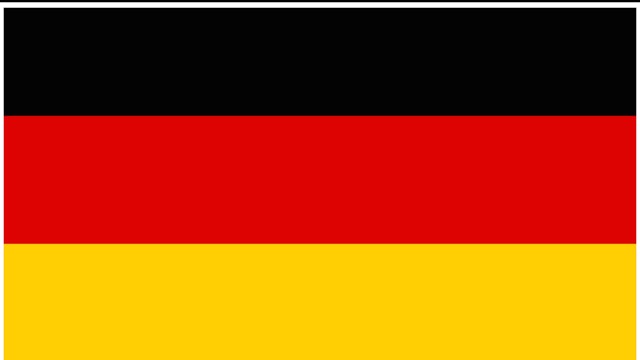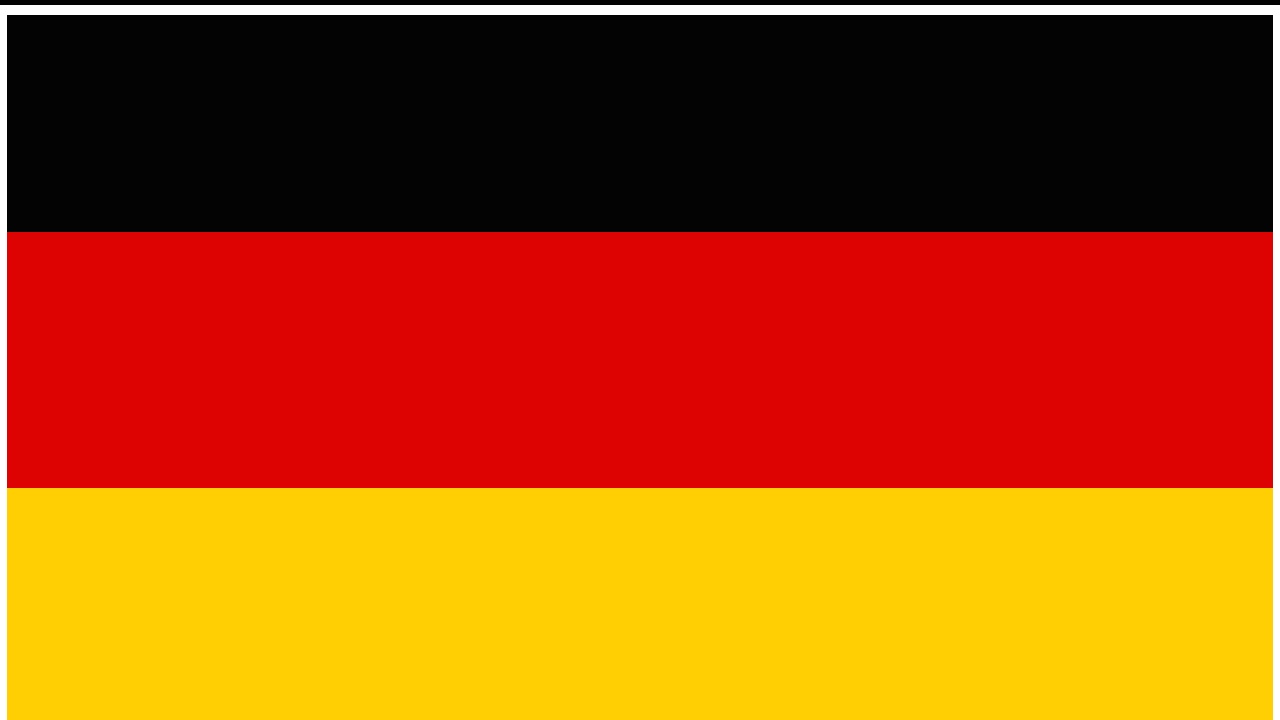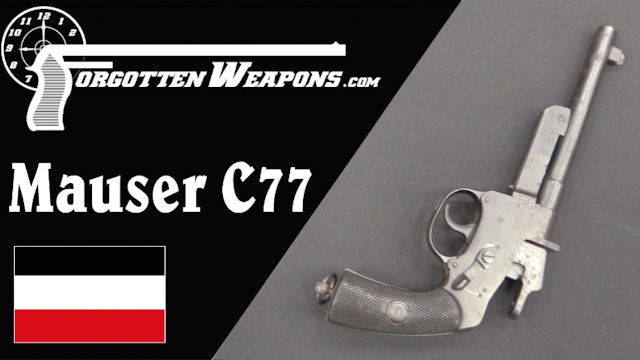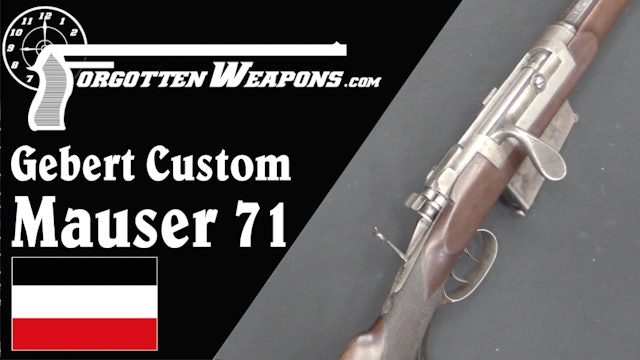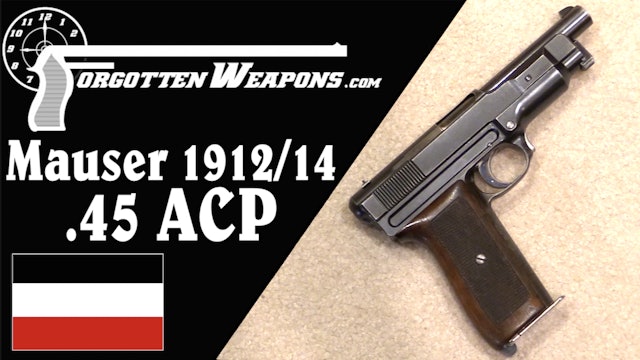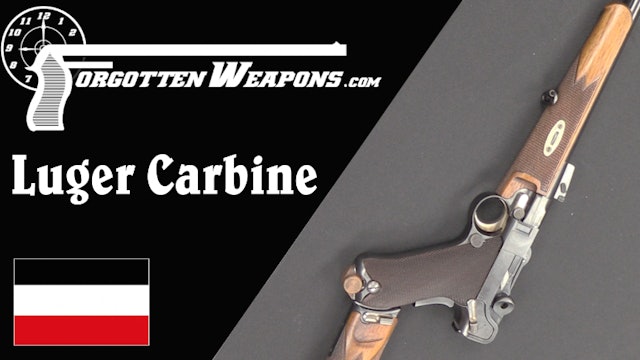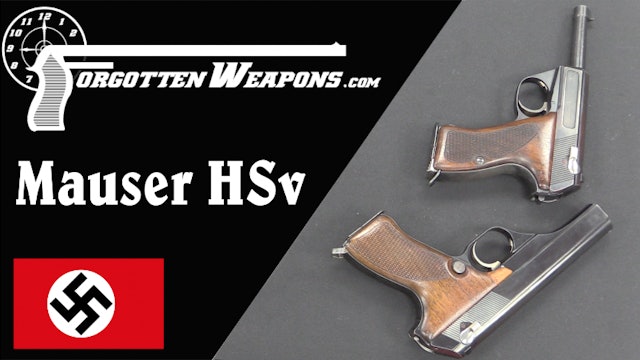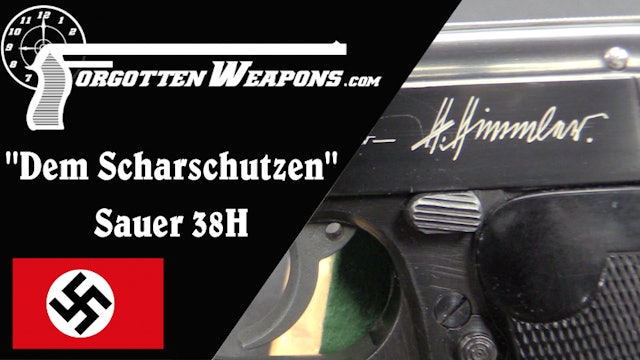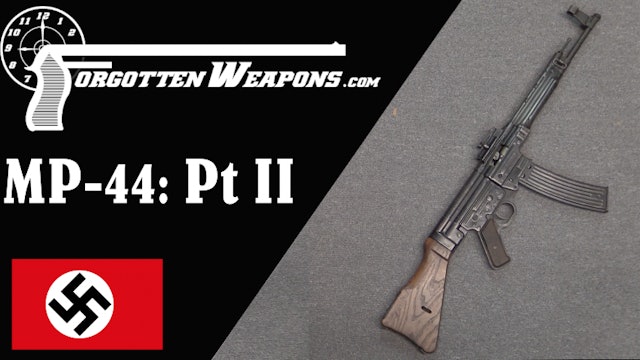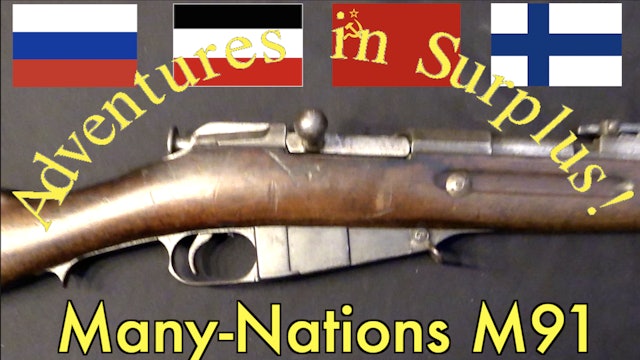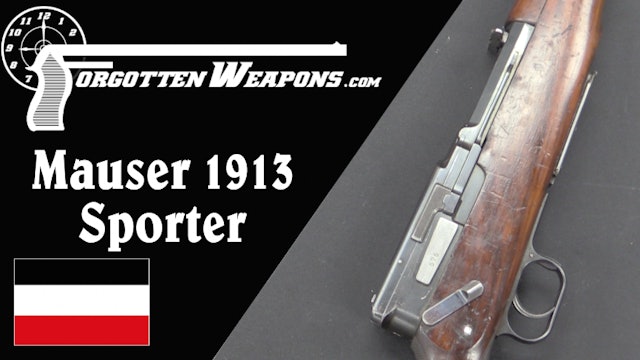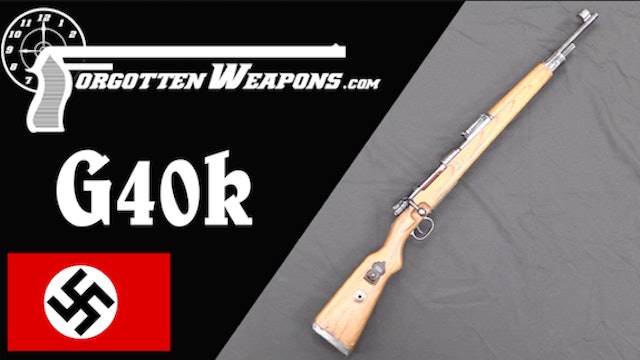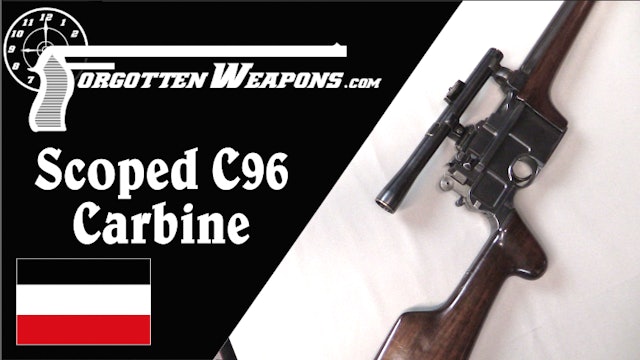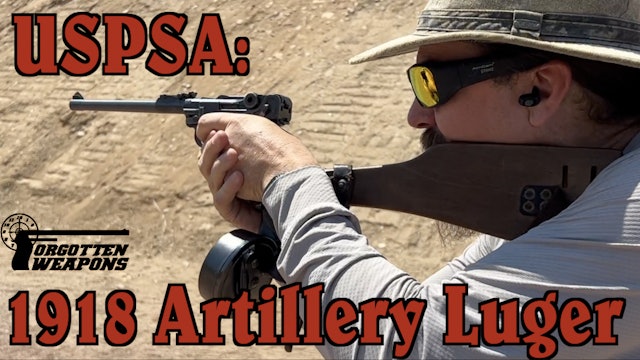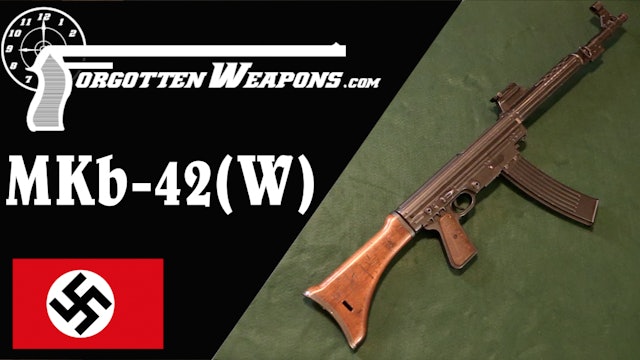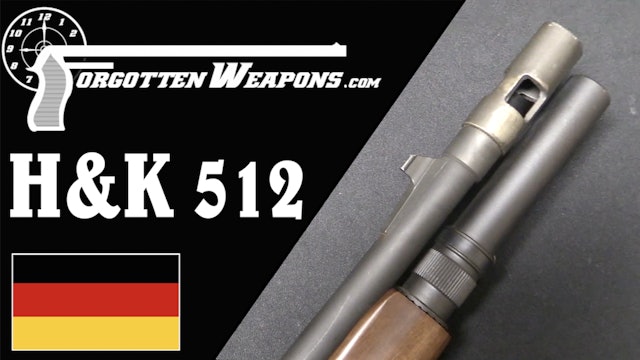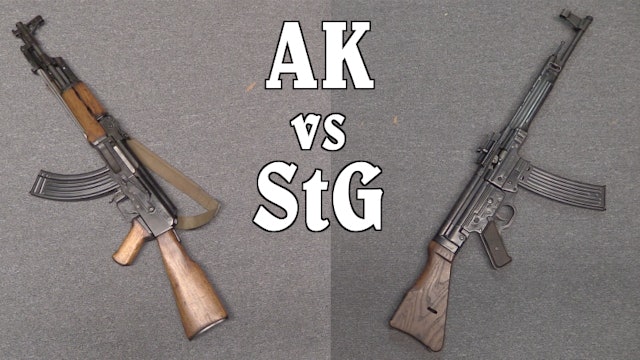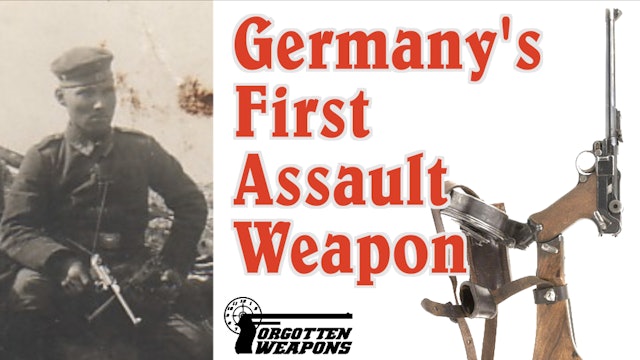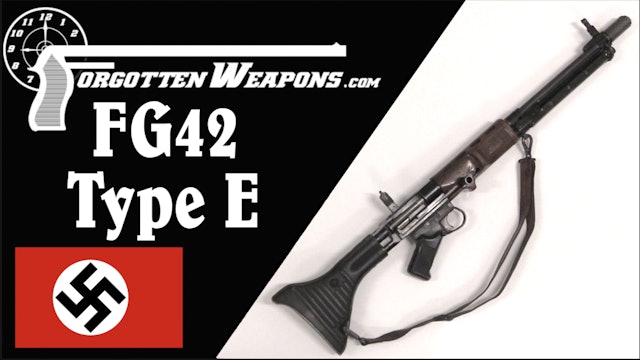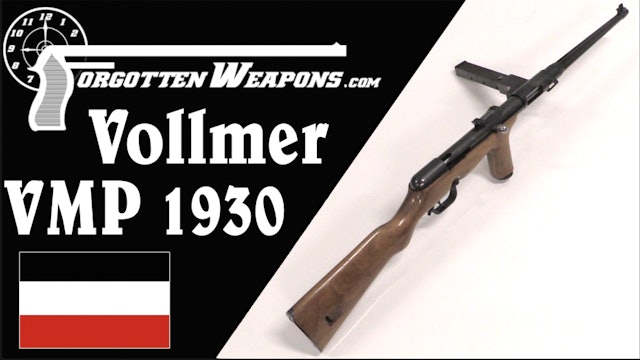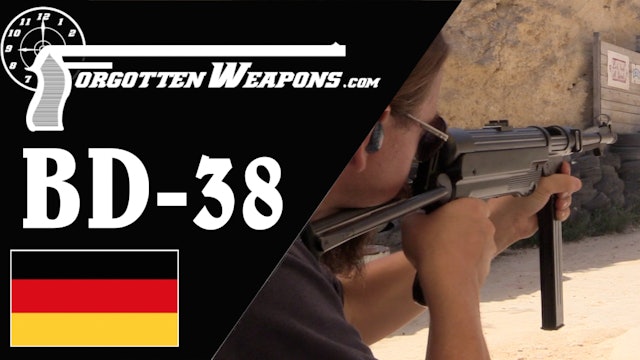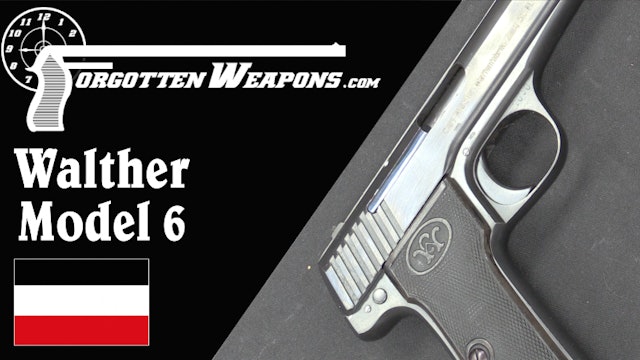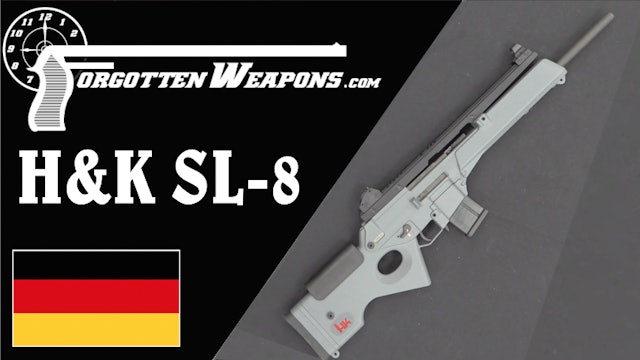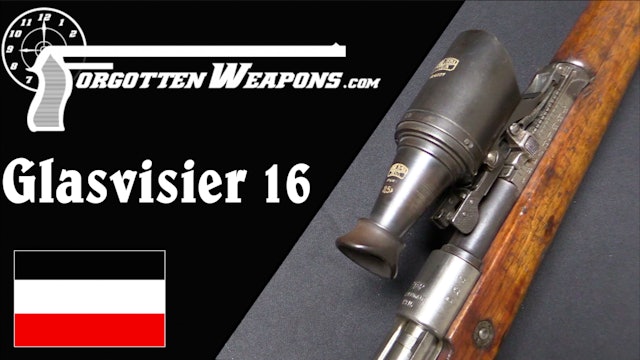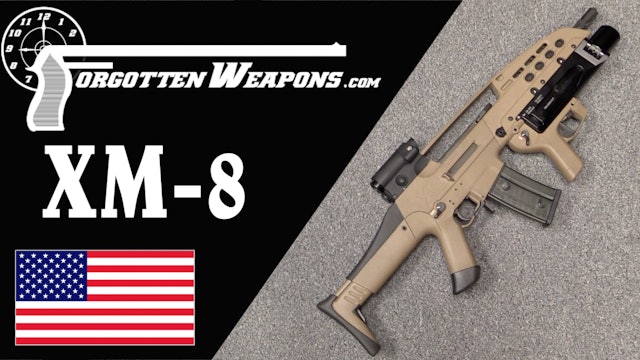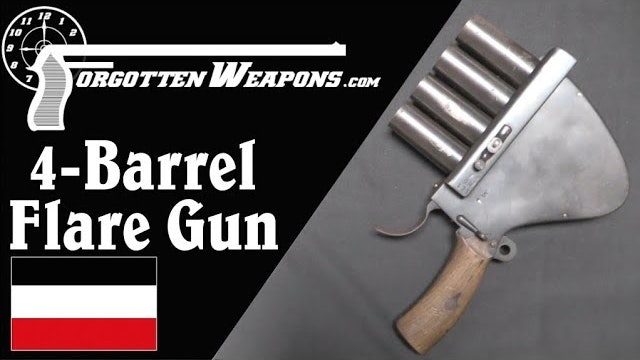-
Mauser 1877 Single-Shot Pistol
The Mauser brothers’ first attempt at a commercial or military handgun was this, the C77 (Construktion 1877) model of single shot pistol. Why a single-shot sidearm in 1877, well into the age of centerfire military revolvers? That is a good question. By the time the design was complete, the Mauser...
-
Gebert Custom Mauser 71 with all the Bells and Whistles
Made by Carl Gebert, a master gunsmith in Munich, this custom sporting rifle exhibits all the fancy options available in the 1870s or 1880s! The base action is an 1871 Mauser, which was a single shot rifle. However, this specially made one had been modified to us a fixed box magazine holding 3 or...
-
Mauser 1912/14 in .45ACP
Before World War One, the Mauser company tried to make a follow-up automatic pistol to replace its famous C96 "Broomhandle" design with something more modern. The result was a very successful pocket pistol in .25ACP and .32ACP, and a series of unsuccessful blowback and delayed blowback service pi...
-
Luger Model 1902 Carbine
With the advent of successful self-loading pistols, one of the additional markets that many companies tried to appeal to was the compact carbine. Self-loading rifles in proper rifle cartridges would not be developed as quickly as the pistols because their much greater chamber pressures represente...
-
Prototype Mauser HSv Pistols
When the German military finally could no longer tolerate the expense of the P.08 Luger in the late 1930s, they held a trial of possible replacements. The three main entrants were BSW with a gas-operated pistol, Walther with what would ultimately be accepted as the P.38, and Mauser with it's expe...
-
Himmler's Sniper Presentation Sauer 38H Pistol
The pistol on display here is a Sauer model 38H (a much more common pistol in German WWII service than many people realize) that was made specially as a presentation piece. Heinrich Himmler presented these pistols to snipers who had killed 100 enemy soldiers - other prizes were offered for 50 (a ...
-
Sturmgewehr MP-44 Part II: History & Implementation
The Sturmgewehr was the result of a German intermediate cartridge development program that began in the mid-1930s. It was sidelined for a period as the focus of German Ordnance shifted to full-power rifles in 8x57mm with telescopic sights, but as the German fighting in Russia became more desperat...
-
Adventures in Surplus: An M91 Mosin of Many Flags
Today we are taking a look at an early production M1891 Mosin Nagant rifle. This one has had quite a busy history...it was originally manufactured at the Izhevsk Arsenal in 1894, with several of the features of a very early M91 (like the palm rest on the trigger guard and the sling swivel on the ...
-
Mauser 1913 Selbstladegewehr Sporter
Paul Mauser spent nearly 20 years attempting to perfect a self-loading rifle for military service. He came closest with this, his 1913 patent model, which was used by German balloon and aircraft fliers as the Model 1915 and Model 1916 respectively - but these rifles were also sold on the commerci...
-
The G40k: A German Experimental Mauser Carbine
In April 1940, WaPrüf 2 directed Mauser to begin development of a shortened Master carbine with a 490mm (19.3”) barrel, presumably for specialty troops. Development meandered on until July 1942, by which time just 28 rifles had been made, in two series. The first batch were numbered 3-15 and the ...
-
Scoped C96 "Broomhandle" Sporting Carbine
This scoped C96 carbine is serial number 12 of the original run of just 30 large-ring C96 carbines. It has the long barrel and detachable stock (in place of the standard pistol grip) of the C96 carbine. The most obvious feature, however, is the telescopic sight mounted on the piece. This was not ...
-
USPSA with a 105-Year-Old Artillery Luger Rig
Today I'm taking an original (made in 1918) Artillery Luger rig out to a 6-stage USPSA match. I'm entered in PCC (pistol-caliber carbine) division using the detachable shoulder stock (note that this is exempted from the NFA, so it does not need to be registered) and the snail drum magazine. Happi...
-
MKb-42(W) - The Sturmgewehr That Never Was
When the German military first requested rifles in the new 8x33mm Kurz cartridge, there were two companies that provided designs. One was Haenel, who would eventually win the competition. The other was Walther, who submitted this rifle - the MKb-42(W). Where the Haenel gun fired from an open bolt...
-
H&K 512 Old-School Tactical Shotgun
In the late 1970s, H&K decided that it wanted to offer a tactical shotgun for the police and security market. Having no experience with shotgun manufacture, they turned to Franchi in Italy - for whom they already handled sales outside Italy. Franchi produced a gas-operated semiautomatic shotgun ...
-
Kalashnikov vs Sturmgewehr!
The German Sturmgewehr and the Soviet Kalashnikov are widely and rightly considered the two most influential and iconic of the modern military rifles. While the German rifle certainly influenced the Soviet design, the two were designed with different intentions and goals. The Sturmgewehr was an a...
-
The First German Assault Weapon: The Lange Pistole 08
The Lange Pistole 08 (long pistol), or Artillery Luger as it is commonly known today, has an interesting history. It was originally developed as a personal defense weapon for German field artillery and air crews. While the foot artillery had been issued carbines, the field artillery were mounted ...
-
FG-42: Perhaps the Most Impressive WW2 Shoulder Rifle
The first production version of the FG42 used a fantastically complex milled receiver and a distinctive sharply swept-back pistol grip. A contract to make 5,000 of them was awarded to Krieghoff in late spring of 1943, but by the fall its replacement was already well into development. The milled r...
-
SMG With a Monopod? The Vollmer VMP-1930
In 1925, the German military began a series of secret SMG trials at the Kummersdorf testing grounds. One of the participants was Heinrich Vollmer. He was funded directly by the government for his small arms R&D until 1930, and iteratively developed his design until it went into large-scale produc...
-
Sport Systeme Dittrich Semiauto BD-38 (MP-38)
Sport Systeme Dittrich in Germany is a manufacturer of a remarkably wide range of reproduction German World War Two small arms (including the FG42, StG-44, G43, MP-3008, MP-35, and VG1-5 as well as the MP-38). They have a mixed reputation, as they are magnificently accurate looking reproductions,...
-
Walther Model 6 - WW1 Officer's Sidearm
Wather introduced its first pistol in 1908, creatively named the Model 1. With the outbreak of World War One, the company was offering the Model 4 pistol for military use. This was a .32 ACP simple blowback action, and it proved quite popular and successful. However, the German military was prima...
-
H&K SL-8: The Civilian G36
The SL-8 was Heckler & Koch’s civilianized version of the G36 military rifle. There was, unsurprisingly, a major interest in semiautomatic civilian copies of the G36, but H&K was in a difficult position to meet the demand. At the time (mid-1990s) such a rifle was subject to both the 1989 assault ...
-
Germany's WW1 Zeiss Bifocal Scope: the Glasvisier 16
The Zeiss 2.5x Glasvizier 16 optic is one of the most unusual and interesting of the German sighting systems used on rifles during the First World War. It is a bifocal optic, working in the same way as today’s SeeAll optic. Basically, a section of magnifying lens sits in the bottom third of the f...
-
Almost Adopted: The H&K XM-8 Family
Today we are in H&K's Grey Room in Virginia, taking a look at the XM-8 program. The rifle evolved form the kinetic energy carbine portion of the doomed XM29/OICW program, and eventually became the G36 rifle. In between those two, however, it was the XM-8, and it came close to adoption by the US m...
-
Gebrüder Rempt Four-Barrel Enormous Flare Pistol
In 1917, the German military issued a contract for the construction of 2500 of these unique and impressive 4-barreled flare launchers. They were manufactured by 7 different companies (this example being from Gebrüder Rempt), and were intended for the illumination of airfields. To this end, they d...
